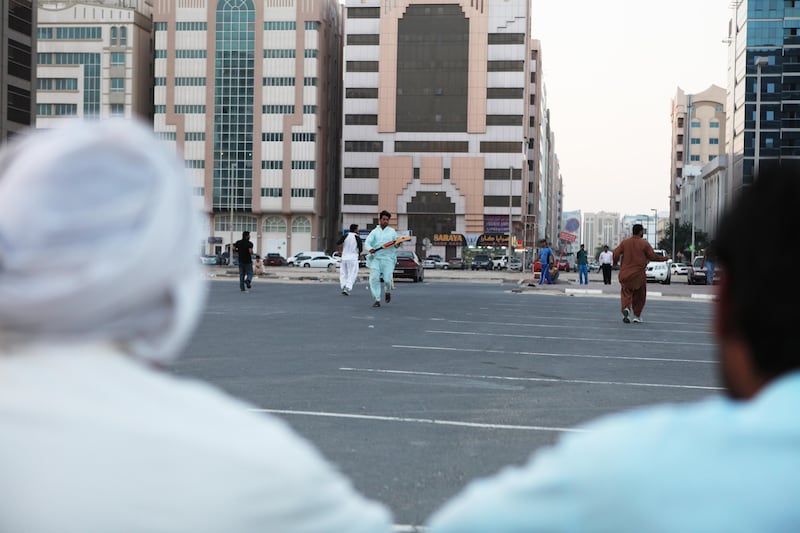Mussaffah. The name conjures up images of a labyrinthine maze of workshops, garages, factories and industrial grime that’s only visited when you need a car serviced.
But did you know the first Shake Shack to open in Abu Dhabi was in Mussaffah? And new schools, shops and restaurants are opening. Rents are no longer a bargain. There are new streets lights and parking bays. Over the past year, Abu Dhabi Municipality have removed scores of abandoned and damaged vehicles that littered the roundabouts, intersections and open areas. In June, the municipality fined about 1,500 people for abandoning vehicles in the area. And buildings that have been abandoned or are no longer fit for purpose are being demolished.
The changes are part of a decade-long transformation of the broader Mussaffah area that includes the industrial area, labour camps and the mainly residential areas across the E30 motorway. At St Paul’s Catholic church in the heart of the industrial area, the parish priest Fr Ani Xavier said he has witnessed many changes in just two years.
“There has been a lot old cars, trucks, damaged vehicles when we opened. These were parked for many years but were removed. And the land was made clean.”
St Paul’s opened in 2015 and, since then, attendances have increased from 3,000 to 10,000 a week. “People were reluctant to come and walk to the church but now there is no fear. There are massive changes. I can see it with my own eyes. I expect a lot of growth,” he said.
_______________
Read more:
[ Mussaffah residents demand more public services and facilities ]
[ Abu Dhabi council approves Dh75m for new development projects ]
_______________
Around the church, workers clean the streets, parking bays are being built and a new eatery has opened on one of the corners.
Coconut Lagoon Restaurant has been offering up Indian fare for more than a year now. Co-owner Biju Dominic also noticed dramatic changes since he first arrived in Mussaffah about 20 years ago.
“In 1997, no one was ready to live here. There was nothing. It was isolated,” he said. “But now there is tremendous development. There is opportunity – the church opened and business is going well.”
Mussaffah developed as an industrial area from the 1970s. A bridge opened in the late 1970s connecting to Abu Dhabi island and boosting growth. The Mussaffah industrial area is strategically located and became a special economic zone, with its own port. But it also became a home for labourers with the establishment of ICAD city and was known for bad traffic and abandoned vehicles.
However, things began to change. An increasingly congested island led to more development.
The closure of villa schools in the city resulted in more opening in Mussaffah. These schools brought scores of families, greater spending power and better accommodation.
In 2010, Dalma Mall opened to cater for the fresh influx of people. Then, it was the biggest mall in Abu Dhabi and is now only eclipsed by Yas Mall. It was also the home of the first Shake Shack burger joint in Abu Dhabi.
“People are moving into Mussaffah. It’s not tourism. It’s residents,” said Juby Jose, marketing manager at Dalma Mall.
Footfall has surged from almost 18,000 daily in 2012 to 51,000 daily today. Seven years after it opened, Dalma Mall is 99 per cent leased.
Mr Jose ascribes the changes to the increase in schools opening in the area over the past six years. “Six years back, rentals used to be very low here and were generally used by bachelors. But slowly the crowd started shifting. A lot of families have moved from the city to Mussaffah in the past two years.”
Well placed to comment on the changes are two long-term residents. Gordon de Souza moved into Mussaffah 12 years ago, while Maria Raskar Raju came in 2000. Both from India, their experiences tell of a constantly evolving area.
“It was not organised. You could easily get lost in a car. But now there are shops and restaurants. It’s properly planned,” said Ms Raju of when she first arrived.
Mr De Souza moved to Mussaffah because rents were shooting up on the island. “It’s much, much better,” he said.
“We have three of four malls. Many restaurants. Gold shops. Rubbish is picked up every day. It’s progress.”
Mussaffah today remains one of the most important industrial areas in Abu Dhabi. But its steady transformation speaks to an expanding city that is going far beyond the island.






